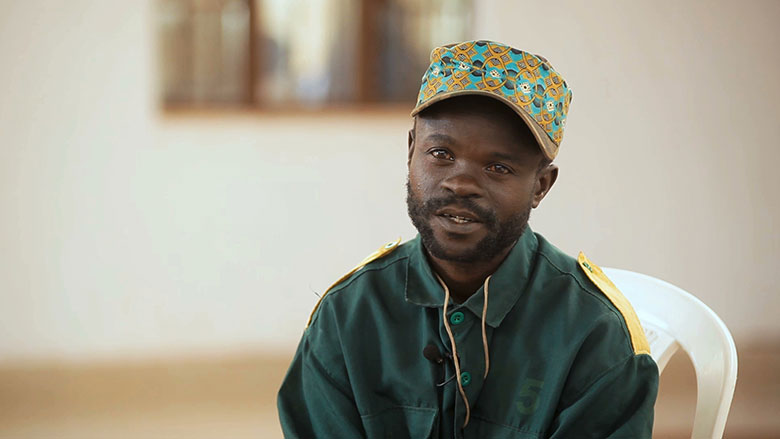RUHENGERI, January 28, 2019 – It was a cool, foggy morning in Rwanda’s northern province. About 30 men were gathered inside a classroom at the Mutobo Demobilization Center while birds chirped loudly outside a large open window. The men were all former combatants who had recently voluntarily returned to Rwanda from the neighboring Democratic Republic of Congo (DRC) and were seeking to rejoin civilian life. They took attentive notes and listened keenly as their instructor went over a history lesson.
In 1994, Rwanda faced the genocide against the Tutsi, which claimed the lives of more than 1,000,000 Tutsi and moderate Hutu in just 100 days. The country was left devastated. After the Rwanda Patriotic Front, led by now-President Paul Kagame, seized power, the former government army and militia fled to what is today the DRC where many combatants spent decades struggling to survive.
In the aftermath of the genocide, the Rwandan government established measures to address the impact of war and move toward national reconciliation. A key component was the disarmament, demobilization and repatriation of armed groups including the former government army and the new government’s military.
In 1997, the Rwanda Demobilization and Reintegration Commission (RDRC) was established and has since demobilized and offered reintegration support to more than 70,000 ex-combatants. The World Bank, through the International Development Association (IDA), supported these efforts with two consecutive projects: the Emergency Demobilization and Reintegration Program (2002-2008), and the Second Emergency Demobilization and Reintegration Project (SEDRP 2009-2017).
“Rwanda has made extraordinary progress in recent years,” said Yasser El Gammal, World Bank Country Manager for Rwanda. “Consolidating peace and stability in the region is critical for the country to continue realizing strong economic growth and substantial improvements in living standards for all Rwandans.”

